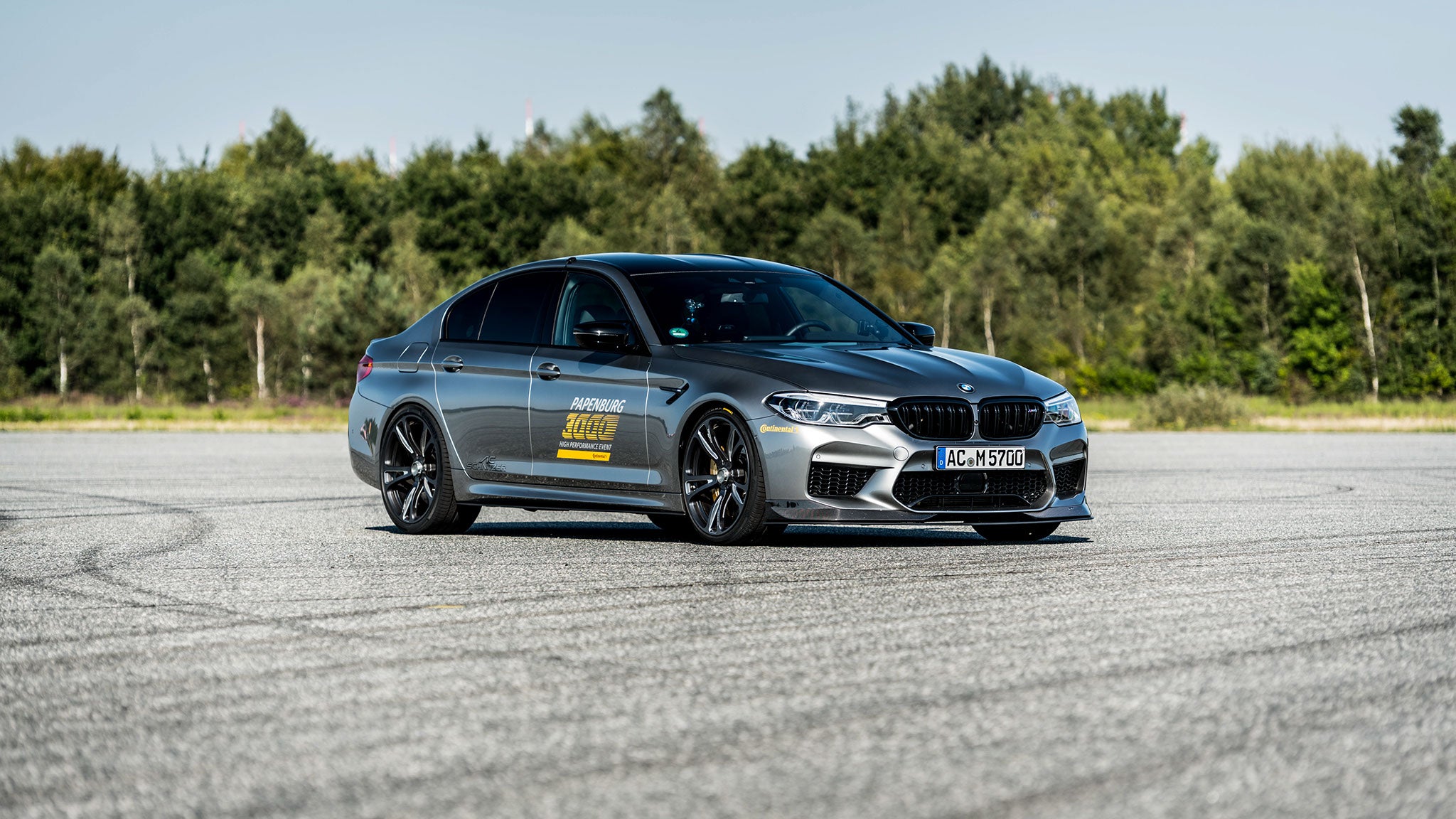
#Performance
High performance in the snow
Winter high-performance event 2020: tuned cars and ultra-high-performance tires put to the rest

Icy roads, deep snow, white forests and freezing cold temperatures… There are few places where such perfect winter conditions are the norm for almost half the year. Lapland is one of them. Located on the Artcic Circle in Finland, the region has snow and below-zero temperatures from November through to the end of April most years. If you want to find out whether your snow tires can handle the toughest winter driving possible, this is the place to put them to the test. In January, some of the world’s best tuners sent their most innovative custom cars to a tire test track near Rovaniemi, Lapland, to challenge the Continental WinterContact under conditions best described as a winter wonderland.
Freeze frame: our best winter tires in (tr)action
Unlike Continental’s other high-performance highlights, the twice-annual Tuner Day and the annual Papenburg 3000 high-speed event, the tuners don’t get to drive their own vehicles around the course. Instead, they entrust their prize pieces to Continental’s Tuning department, who organise their transport and set up systematic tests that enable comparisons to be drawn between their performance on winter tires.
Michael Schneider, Continental’s Head of Tuning, outlines the challenging logistics: “The tuners deliver the vehicles to us in Germany. They are trucked to Finland, where we have prepared special tracks. There’s a wide run, a handling course and a slalom track. The cars tackle them all on our best winter tires and we compare the results.”
But how do you make a comparison between the winter performance of vehicles that are so different from each other, that were built and customized with such different applications in mind? As Schneider explains, “it’s not a competition, it’s a test. The cars are all on the same winter tires, so we can see the effects of different drive concepts on ice and snow. An all-wheel-drive will predictably handle certain situations better, but front-wheel drive and even rear-wheel drive cars can also have their advantages.” Because each vehicle is run through the same scenarios on the same winter tires, but each machine is unique, what emerges is usually a balance of pros and cons, strengths and weaknesses in each car.
To provide an additional expert opinion, the team brought along Mikaela Åhlin-Kottulinsky to test drive the cars. Since she hails from Sweden, the professional race car driver knows a thing or two about driving in winter conditions – and about finding the perfect snow tire for a high-performance vehicle. Along with special guest, supercar blogger Shmee150, she documented the entire event.
From SUVS to on-road racers - the high-performance vehicles that braved the snow
 A splash of color in the snow: the mtm RS3.
A splash of color in the snow: the mtm RS3.
 Widest tires in the test: the Lorinser G Modell with the 275/45R22 WinterContact™ TS 850 P.
Widest tires in the test: the Lorinser G Modell with the 275/45R22 WinterContact™ TS 850 P.
 The RW Mini Countryman JWC ALL4 on the WinterContact™ TS 860 S.
The RW Mini Countryman JWC ALL4 on the WinterContact™ TS 860 S.
 The AC Schnitzer Z4 M40i scored with agility and a lot of driving fun.
The AC Schnitzer Z4 M40i scored with agility and a lot of driving fun.
 Turbo for the Turbo: The Techart 992 4S was pushed to its limits.
Turbo for the Turbo: The Techart 992 4S was pushed to its limits.
 All tuner cars equipped with Continental winter tires (i.e. WinterContact™ TS 850 P, WinterContact™ TS 830 P, WinterContact™ TS 860 S).
All tuner cars equipped with Continental winter tires (i.e. WinterContact™ TS 850 P, WinterContact™ TS 830 P, WinterContact™ TS 860 S).
 Face to face: the RW Mini Countryman JCW ALL4 and the Startech Range Rover Velar.
Face to face: the RW Mini Countryman JCW ALL4 and the Startech Range Rover Velar.
 The Toyota Supra GR by AC Schnitzer on the track.
The Toyota Supra GR by AC Schnitzer on the track.
- Image 1
- Image 2
- Image 3
- Image 4
- Image 5
- Image 6
- Image 7
- Image 8
n a snow-covered landscape where locals tend to hit the icy roads with studded tires, maintaining grip and traction on packed snow and icy surfaces while traveling at top speeds with studless winter tires is a demanding challenge deserving of the world’s most ambitious high-performance cars.
The Continental Tuning team, supported by professional test drivers, measures the time it takes each vehicle to complete the handling course, as well as accelleration on the 50 meter wide, 1 km long sprint run, followed by a brake test – after all, in winter coming to a reliable stop is almost as important as taking off quickly. The Continental WinterContact tires faced with these conditions are of course designed for ice, snow and low temperatures, with a deeper tread for better traction and an innovative rubber compound that stays flexible and limber to increase grip and reduce the stopping distance when braking. They are also the result of a long-standing collaboration between Continental’s ultra-high-performance tire development and top car tuners.
High-performance winter test results
BRABUS, ABT, Techart and AC Schnitzer were amongst the Premium Tuners presenting their latest innovations. Find out how they performed out of their natural habitat, in the snow.

